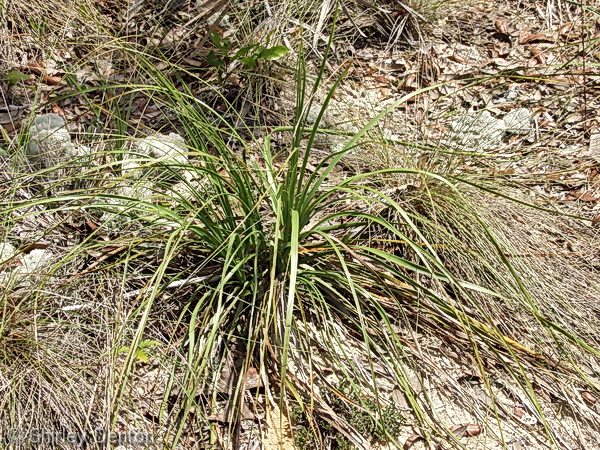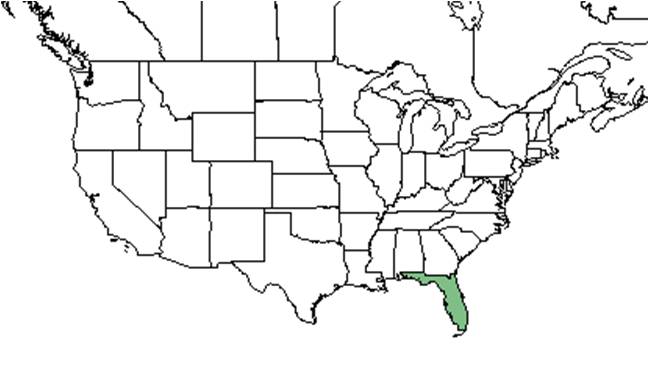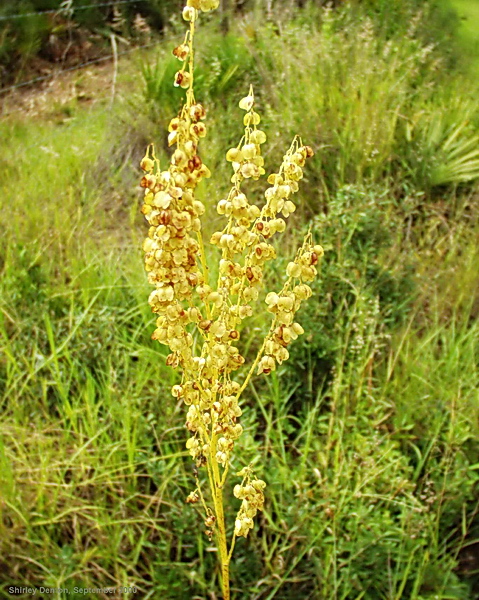Difference between revisions of "Nolina brittoniana"
(→Ecology) |
(→Conservation and Management) |
||
| Line 60: | Line 60: | ||
<!--===Diseases and parasites===--> | <!--===Diseases and parasites===--> | ||
| − | ==Conservation and | + | ==Conservation and management== |
Endangered: April 27, 1993 <ref name="fws"/>. | Endangered: April 27, 1993 <ref name="fws"/>. | ||
Revision as of 20:21, 27 June 2016
| Nolina brittoniana | |
|---|---|

| |
| Photo taken by Shirley Denton (Copyrighted, Use by photographer’s permission only) Nature Photography by Shirley Denton | |
| Scientific classification | |
| Kingdom: | Plantae |
| Division: | Magnoliophyta - Flowering plants |
| Class: | Liliopsida – Monocotyledons |
| Order: | Liliales |
| Family: | Ruscaceae |
| Genus: | Nolina |
| Species: | N. brittoniana |
| Binomial name | |
| Nolina brittoniana Nash | |

| |
| Natural range of Nolina brittoniana from USDA NRCS Plants Database. | |
Common name: Britton's beargrass
Contents
Taxonomic notes
Description
A description of Nolina brittoniana is provided in The Flora of North America.
It is a perennial that grows from a short, thick, bulb-like rootstock [1].
It is very similar to Nolina atopocarpa; however, N. atopocarpa has shorter leaves, green flowers, and asymmetrical fruits [2].
Distribution
This species is a narrow endemic, nearly entirely limited to the Lake Wales Ridge (Dolan et al. 2004). Most species endemic to the Lake Wales Ridge are selective in habitat; however, N. brittoniana is a edaphic generalist and has a broad microhabitat tolerance (Menges 1998).
Ecology
Habitat
In the Lake Wales Ridge, N. brittoniana occurs in scrub oak sand ridges and Pinus clausa-Ceratiola scrubs. Associated species include sand pine, scrub oak, and palmetto (FSU Herbarium).
Phenology
Fruits May through August (FSU Herbarium).
It has been observed that N. brittoniana has low levels of genetic variation despite having traits that are correlated with high genetic variation (Hamrick et al. 1991). However, compared to other Lake Wales Ridge endemics, N. brittoniana has one of the highest levels of genetic diversity (Menges and Dolan 2001).
Fire ecology
Weekley and Menges (2003) found that 98% of individuals survived after a low intensity fire, suggesting this species is a strong resprouter following a fire. If the fire is high intensity, it could cause high mortality rates and low post-burn growth. Flowering is the greatest the first year post-fire, with the flowering rate dropping dramatically over subsequent years (Menges et al. 1996).
Pollination
Pollination is necessary for successful seed production (TNC 1995).
The following Hymenoptera families and species were observed visiting flowers of Nolina brittoniana at Archbold Biological Station (Deyrup 2015):
Apidae: Apis mellifera
Leucospididae: Leucospis robertsoni, L. slossonae
Sphecidae: Ammophila pictipennis, Bicyrtes quadrifasciata, Cerceris fumipennis, C. rufopicta, Sphex ichneumoneus
Vespidae: Pachodynerus erynnis
Conservation and management
Endangered: April 27, 1993 [1].
The distribution is limited to the Lake Wales Ridge, which is being quickly converted to agricultural and residential development. Fragmentation and fire suppression are also responsible for the decline in populations of endemic species along the Lake Wales Ridge [1].
Cultivation and restoration
Photo Gallery
Flowers of Nolina brittoniana Photo by Shirley Denton (Copyrighted, Use by photographer’s permission only) Nature Photography by Shirley Denton
References and notes
Deyrup, M.A. and N.D. 2015. Database of observations of Hymenoptera visitations to flowers of plants on Archbold Biological Station, Florida, USA.
Dolan, R. W., R. Yahr, et al. (2004). "Population Genetic Structure in Nolina brittoniana (Agavaceae), a Plant Endemic to the Central Ridges of Florida." Southeastern Naturalist 3(1): 25-36.
Florida State University Robert K. Godfrey Herbarium database. URL: http://herbarium.bio.fsu.edu. Last accessed: October 2015. Collectors: Edwin L. Bridges, D. Burch, R.J. Eaton, H.A. Gleason, Robert K. Godfrey, Steve L. Orzell, James D. Ray, D.B. Ward. States and Counties: Florida: Highlands, Orange, Polk. Compiled by Tall Timbers Research Station and Land Conservancy.
Menges, E. S., R. W. Dolan, et al. (2001). "Comparative Genetics of Seven Plants Endemic to Florida's Lake Wales Ridge." Castanea 66(1/2): 98-114.
Menges, E.S., D.R. Gordon, and R.W. Dolan. 1996. Demography, breeding system, and genetics of Nolina brittoniana. Report to Florida Statewide Endangered and Threatened Plant Conservation Program. Florida Department of Agriculture and Consumer Services, Division of Forestry; Tallahassee, Florida.
TNC. (1995). "Element stewardship abstract for Nolina brittoniana-Britton's bear grass." Arlington, Virginia: The Nature Conservancy.
Weekley, C. W. and E. S. Menges (2003). "Species and Vegetation Responses to Prescribed Fire in a Long-Unburned, Endemic-Rich Lake Wales Ridge Scrub." The Journal of the Torrey Botanical Society 130(4): 265-282.
